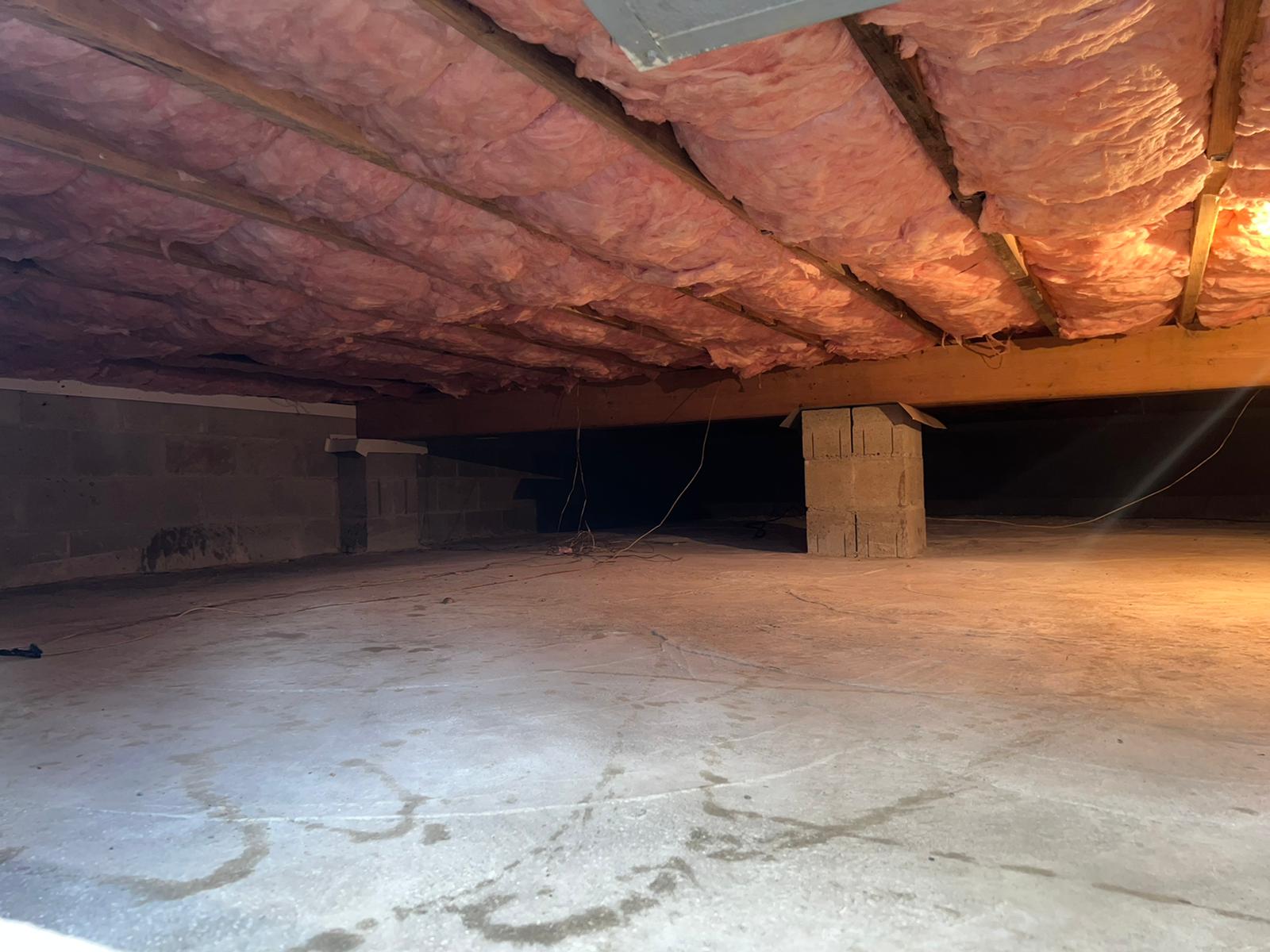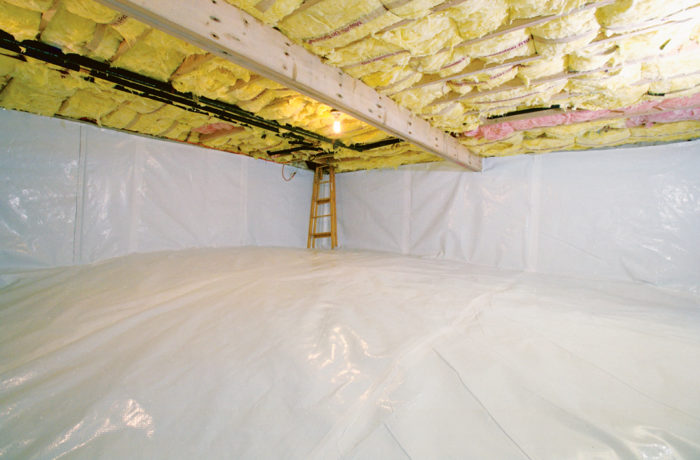Crawl space insulation plays a critical role in stabilizing indoor temperatures, reducing energy consumption, and maintaining structural integrity. Homes with uninsulated or poorly insulated crawl spaces often suffer from cold floors, high HVAC costs, and chronic moisture problems. Addressing this issue is essential for whole-home energy performance.
Insulating the crawl space helps regulate thermal conditions, lowers utility bills, and improves indoor air quality. This guide covers insulation types, performance specs, selection criteria, and frequently asked questions to help homeowners and contractors make informed decisions.
How Crawl Space Insulation Affects Energy Efficiency
Thermal Regulation and Energy Savings
Crawl spaces are often the weakest link in a home’s thermal envelope. Heat escapes through the floor in winter and enters in summer, overworking HVAC systems. This leads to uneven temperatures and inflated energy bills.
Key Benefits of Crawl Space Insulation
- Prevents cold air from rising through floors
- Reduces heat transfer through the foundation
- Lowers heating and cooling demand
- Enhances structural durability
- Increases indoor comfort and air quality

Types of Crawl Space Insulation
Choosing the Right Material
Selecting insulation depends on whether the crawl space is vented or unvented, regional climate conditions, and the level of moisture exposure. Each insulation type serves specific needs in performance, cost, and longevity.
Insulation Materials and Their Applications
Closed-Cell Spray Foam
- R-Value per Inch: R-6.5 to R-7.5
- Moisture Resistance: Excellent
- Durability: High
- Ideal Use: Unvented crawl spaces, where vapor and air sealing are required
Open-Cell Spray Foam
- R-Value per Inch: R-3.5 to R-4.0
- Moisture Resistance: Moderate
- Durability: Medium
- Ideal Use: Dry, vented crawl spaces with minimal moisture risk
Rigid Foam Board
- R-Value per Inch: R-4.5 to R-5.0
- Moisture Resistance: Good
- Durability: High
- Ideal Use: Insulating perimeter walls and creating thermal barriers
Fiberglass Batts
- R-Value per Inch: R-3.2 to R-3.8
- Moisture Resistance: Poor without encapsulation
- Durability: Low
- Ideal Use: Vented crawl spaces with dry conditions
Mineral Wool
- R-Value per Inch: R-4.0 to R-4.3
- Moisture Resistance: Moderate
- Durability: High
- Ideal Use: Fire-prone or pest-exposed environments
Bonus Tip
Avoid fiberglass batts in humid or damp crawl spaces without full encapsulation. Moisture retention can lead to mold and material degradation.
Technical Performance Specifications
R-Values and Vapor Barriers
Recommended R-Values
- Cold Climates: R-25 to R-30
- Mild Climates: R-13 to R-19
Vapor Barrier Requirements
- Needed in most climates to stop ground moisture from entering
- Should be installed over soil and extended up the walls
Air Sealing Importance
- Especially vital in unvented spaces to maintain insulation performance
- Prevents drafts and thermal bridging
Moisture Control Strategies
- Ground vapor barriers
- Proper drainage and sump pumps (if needed)
- Perimeter wall sealing
Fire Safety Considerations
- Materials must comply with local code, typically Class A flame spread rating
- Fire-retardant coatings may be required on exposed insulation
Factors to Consider Before Choosing Insulation
Crawl Space Design
Vented vs. Unvented
- Vented Spaces: Insulate between floor joists
- Unvented Spaces: Insulate perimeter walls and seal vents
Moisture Levels
- High moisture requires encapsulation and water management before insulating
Pest Concerns
- Closed-cell foam and mineral wool deter rodents and insects better than fiberglass
Climate Zone Impact
- Humid Regions: Prioritize moisture control and vapor barriers
- Cold Regions: Use higher R-value materials like rigid foam or closed-cell foam
- Mixed Climates: Hybrid approaches may be best (e.g., foam boards with batts)
Age and Condition of the Building
- Check for structural damage before installing insulation
- Repair rot, sagging joists, or drainage issues in older homes
Space Accessibility
- Tight Spaces: Spray foam works well in narrow or irregular crawl areas
- Open Spaces: Rigid foam or batts are easier to install if access allows
Bonus Tip
Always pair insulation with ground vapor barriers for best moisture defense.
Industry Insights and Data
- According to the U.S. Department of Energy, up to 25% of a home’s heat loss can occur through an uninsulated crawl space.
- Studies by Building Science Corporation show that proper insulation and sealing can reduce HVAC costs by 15% to 20% per year.
- Insulated crawl spaces also experience less wood rot and mold-related deterioration over time.
Common Questions About Crawl Space Insulation
What Happens If You Skip Insulating the Crawl Space?
- You may face heat loss, frozen pipes, mold growth, and higher utility bills
- Moisture buildup can damage insulation and structural wood members
Should I Insulate the Crawl Space Ceiling or Walls?
- Vented Crawl Spaces: Insulate between the joists (ceiling)
- Unvented Crawl Spaces: Insulate perimeter walls for better performance and air sealing
Do I Need a Vapor Barrier?
Yes. A vapor barrier is essential in most climates to:
- Prevent mold and mildew
- Extend insulation life
- Block moisture from migrating upward
Can Insulation Eliminate Crawl Space Odors?
Indirectly, yes. Moisture reduction through encapsulation and insulation lowers the chance of mold, which often causes odors.
Bonus Tip
Insulation alone won’t solve all crawl space problems. Combine it with sealing, moisture management, and drainage correction for best results.

Crawl Space Insulation FAQ
What’s the Best Insulation for Cold Regions?
- Closed-cell spray foam or rigid foam board due to high R-values and excellent moisture control
How Long Does Insulation Last in a Crawl Space?
- Closed-cell spray foam and rigid board: 20–30 years or more
- Fiberglass and batts: 5–15 years, often less in damp conditions
Can I Insulate the Crawl Space Myself?
- DIY is possible for dry, vented spaces using batts
- Spray foam and encapsulation require professional tools and safety gear
Do Building Codes Apply?
Yes. Local codes often define:
- Minimum R-values
- Fire rating requirements
- Vapor barrier use
Always check municipal requirements before starting.
Can Insulation Increase Home Resale Value?
Yes. Energy-efficient improvements, including crawl space insulation, appeal to buyers and can raise appraisal value.
Make the Right Decision
Crawl space insulation is more than just a comfort upgrade—it’s an essential investment in your home’s efficiency, durability, and health. Choosing the best insulation depends on several factors: your climate zone, crawl space type, moisture conditions, and material preferences.
Before you insulate, assess crawl space accessibility, repair existing damage, and address drainage and vapor intrusion. For long-term results, combine proper insulation with air sealing and moisture control. Done right, crawl space insulation delivers lasting benefits in comfort, utility savings, and structural protection.

